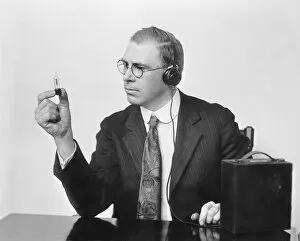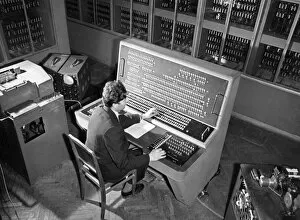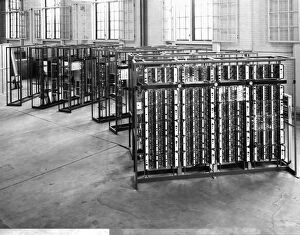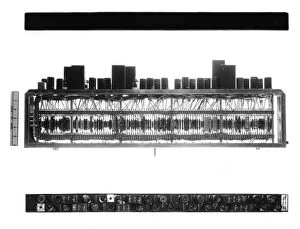Vacuum Tubes Collection
In a fascinating feature by the Daily Mirror's Ruggles, the team at the National Physical Laboratory takes center stage as they delve into the world of vacuum tubes
For sale as Licensed Images
Choose your image, Select your licence and Download the media
In a fascinating feature by the Daily Mirror's Ruggles, the team at the National Physical Laboratory takes center stage as they delve into the world of vacuum tubes. These remarkable inventions, pioneered by Fleming and later developed by inventor Earl C. Hanson, revolutionized technology as we know it. One captivating image showcases the besm-1 computer designed by the Institute of Precision Mechanics and Computation Techniques in 1955. This magnificent machine was responsible for calculating the orbits of approximately 700 small planets within our solar system, aiding in creating an international astronomical calendar. Additionally, it solved complex algebraic equations crucial for compiling maps based on geodesical surveys. Another mesmerizing snapshot captures technician T. Kondratyeva preparing this extraordinary besm-1 computer to tackle yet another mathematical conundrum in 1956. With precision and expertise, she types English text onto paper tape using a perforator that seamlessly translates from English to Russian—a testament to both human ingenuity and technological advancement. Fast forward to 1959 when we witness the awe-inspiring besm-2 computer operating at Moscow's USSR Academy of Sciences' Calculating Center. This cutting-edge machine showcased immense computational power while pushing boundaries in scientific research and analysis. The journey through these captivating images not only highlights the incredible advancements made possible by vacuum tubes but also pays tribute to those brilliant minds who brought them to life—the dedicated team at National Physical Laboratory and countless technicians like T. Kondratyeva who tirelessly worked behind-the-scenes. As we marvel at these historical milestones captured within these photographs, let us remember that without vacuum tubes paving the way for modern computing systems, our world would be vastly different today—underscoring how innovation shapes our future one breakthrough at a time.










